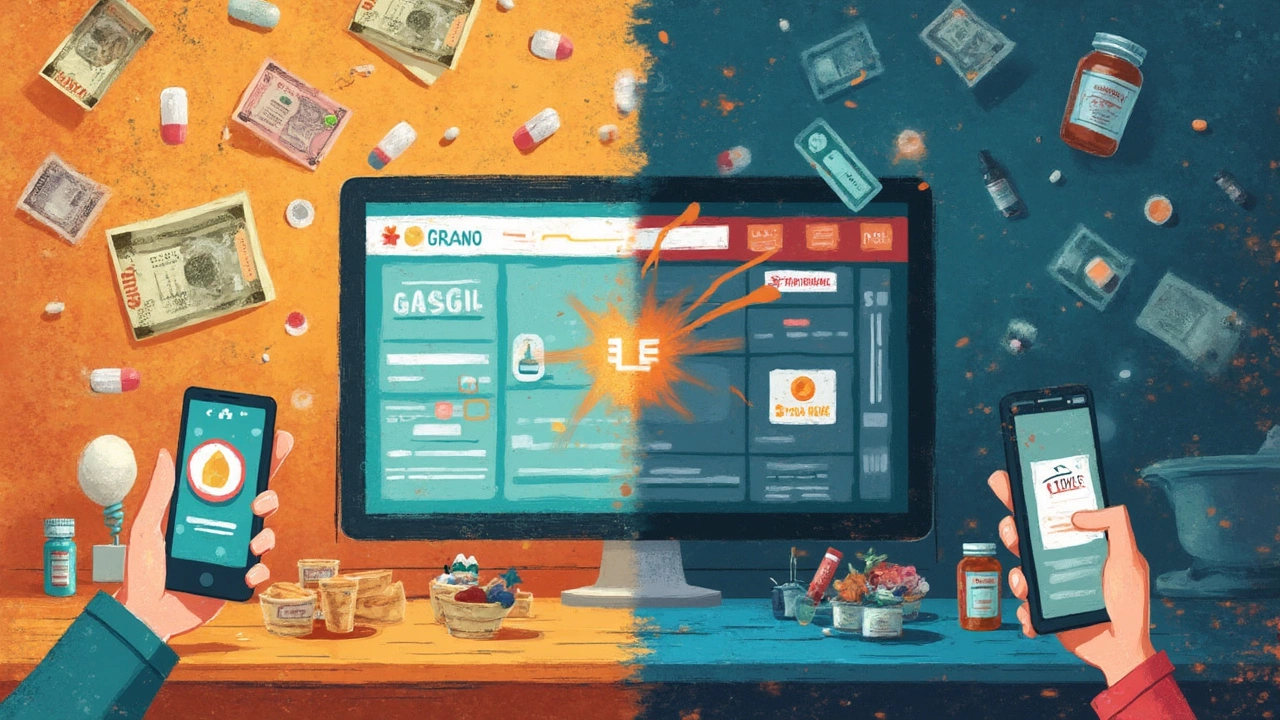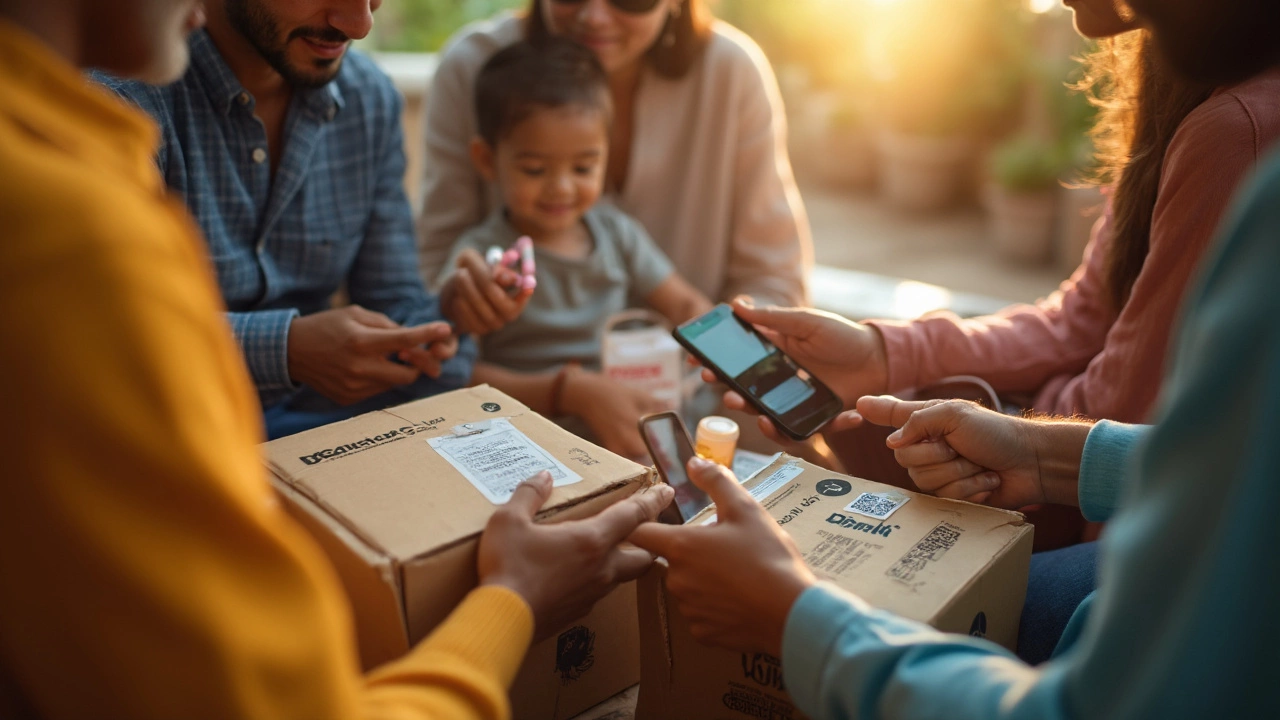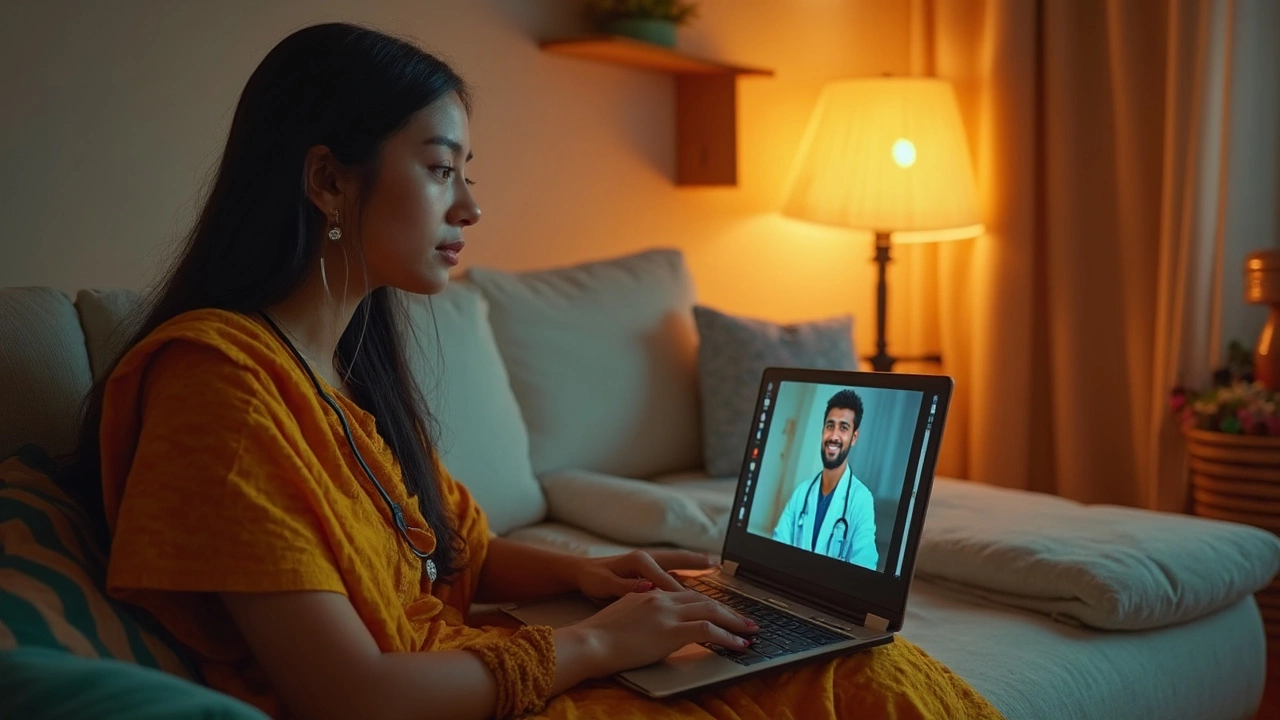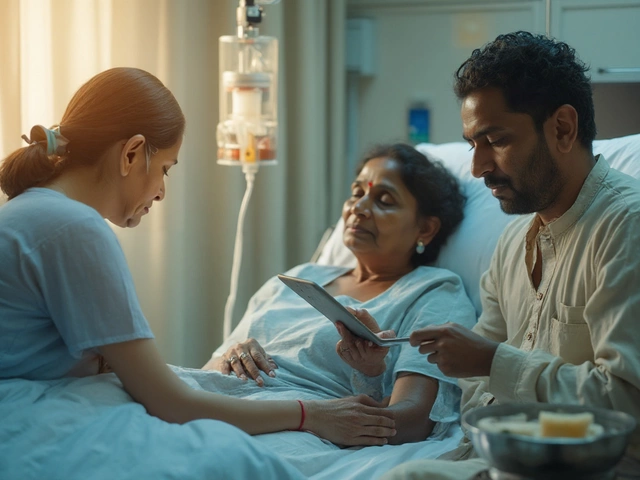If you’ve ever felt too lazy to haul yourself to a clinic just for a prescription refill, you’re not alone. The click-and-ship world of online prescriptions exploded during the 2020 pandemic, but it’s been picking up steam ever since. In 2024, over half of Americans reported at least one telemedicine visit, and e-pharmacy use keeps climbing. Now, the idea of getting legit medication delivered to your doorstep might sound as dreamy as drones dropping pizza—but people still wonder: is it actually safe?
How Online Prescriptions Work Today
The system behind online prescriptions is a mix of old-school healthcare and modern tech. You visit a website or app, fill in some questions about your symptoms and medical history, and sometimes connect with a licensed doctor on video or chat. If the doctor thinks meds are appropriate, they write a legal prescription. The pharmacy team fills it and ships it out. Sounds easy, right?
The reality? Some platforms follow strict protocols. They have checks, secure video consultations, and even flag risk factors like allergies or drug interactions. In the U.S., the FDA and DEA actually keep an eye on licensed websites—there's this Verified Internet Pharmacy Practice Sites™ (VIPPS) seal that shows a pharmacy follows the rules. Australia, the UK, and Canada have similar watchdogs making sure rogue online drugstores can’t just sell you antibiotics like it’s candy.
Here’s where it gets wild: Not all sites care about your health. A study from LegitScript found that in 2023, about 95% of online pharmacies operated illegally or without proper certification. Some didn’t even require a prescription! One click, and powerful drugs could land on your doorstep. That’s why knowing how online prescriptions actually work—and who’s behind the site—makes a massive difference.
The Benefits of Getting Prescriptions Online
Convenience is the obvious win here. Late-night cough? Minor rash at lunchtime? No waiting rooms, no judgemental looks from the nurse, and no fighting to find parking. This is a lifeline if you live in a rural area or can’t get off work easily. You also get privacy, which is huge for stuff that feels embarrassing—think birth control or ED meds.
But beyond convenience, online prescriptions can speed up care in places where regular appointments are booked out for weeks. During the COVID-19 pandemic, telemedicine filled major gaps, helping people with chronic conditions stay on their meds without leaving the house. The American Medical Association reported that one in four Medicare patients used telehealth by the end of 2021. So it’s not just hype—digital healthcare has become a big safety net.
Online consultations also give some people a direct line to specialists in other cities or countries. Got a super-rare skin issue that stumped your local doctor? A telemedicine dermatologist in Mumbai or Los Angeles could take a look at your photos and recommend the right treatment—sometimes for cheaper than a regular visit.

Risks Lurking Behind the Screen
Like any good thing, there are some land mines hidden under the shiny surface. The biggest red flag: fake pharmacies and counterfeit meds. In 2023, the World Health Organization estimated that one in ten medicines in low- and middle-income countries was substandard or fake—but online, the problem leaks everywhere. If you stumble onto a sketchy site, you might get sugar pills (if you’re lucky) or dangerous dosages that mess with your health.
Ever heard about people getting “prescriptions” for powerful opioids or anxiety meds without any doctor? That’s not just illegal, it’s super risky. Even legit platforms sometimes struggle to spot who’s safe to prescribe. For example, diagnosing strep throat without a throat swab can miss serious infections. And some illnesses need physical exams, full lab tests, or more follow-up than a quick webcam call.
There’s another risk: your private data. A 2024 review by cybersecurity firm Norton warned that not all online pharmacies encrypt your info safely. If a site isn’t careful, hackers could grab your medical history, credit card numbers, or even blackmail you if you ordered sensitive meds. Before you enter anything personal, look for sites with ‘HTTPS’ and obvious privacy policies.
How to Tell if an Online Prescription Is Safe
This is where you’ve got to be a bit of a detective. Here are signals you’re dealing with a safe, legal online pharmacy:
- Check for these seals: In the U.S., look for VIPPS (by NABP). In Canada, CIPA. In the UK, the General Pharmaceutical Council’s logo. Never trust only a shiny homepage.
- They always require a real prescription, or they insist you consult with their licensed doctor—not just answer a few vague questions.
- The website lists a physical address and a real phone number, and staff answer the phone like professionals, not like a call center in the Twilight Zone.
- Most legit sites have pharmacists available to answer questions. If nobody can tell you how the drug works or what side effects to expect, that’s a huge warning sign.
- The checkout uses secure payment methods (watch for that padlock symbol in the browser).
If you run into a site where the price seems too good to be true, stop right there. Real meds aren’t dirt cheap. And always, always check your country’s public registry of legal online pharmacies—there’s no shame in double-checking before handing over your personal details.
| Country | Online Prescription Rules | Watchdog Agency |
|---|---|---|
| United States | Licensed doctor consult required; only for FDA-approved meds | NABP, FDA |
| United Kingdom | Regulated by GPhC; online pharmacy must be registered | GPhC, MHRA |
| Australia | E-prescriptions for most meds; must use AHPRA-licensed doctor | AHPRA, TGA |
| Canada | Certified by CIPA; doctor review mandatory | CIPA, Health Canada |

Tips for Staying Safe When Getting Online Prescriptions
If you’re thinking of trying out online prescriptions, here are some steps to make sure you’re not walking straight into trouble. Prioritize safety, and you can enjoy the comfort and speed without risking your health:
- Start by talking to your own doctor, if possible—ask them if your condition is suitable for digital care.
- Use government lists or trusted medical associations to find licensed e-pharmacies or telemedicine providers. Don’t just type “buy medicine quick” into a search engine and hope for the best.
- Keep records—save your digital prescriptions and receipts just like you would from in-person visits. This helps in case any questions pop up later.
- Only order medication that matches what the doctor prescribed. Watch out if a site tries to upsell extra pills or “bonus” treatments.
- Ask the pharmacist if something feels off. Weird packaging, unusual pill colors, or instructions that contradict your doctor? Don’t risk it—get clarification now, not later.
- Monitor yourself for side effects, and always have a plan to follow up with a real doctor if anything doesn’t feel right.
- Be careful sharing personal info on new platforms, even if their ads show up everywhere.
And here’s one more vivid fact: according to the NABP’s Rogue Rx site, sites that “sell prescription drugs without a prescription” are on its Not Recommended List. This is not a little list—it had over 11,000 domains in 2024. With numbers like that, you can see how being picky pays off.
Let’s face it, getting a online prescription can make life a heck of a lot easier. But you wouldn’t grab sushi from a mystery van behind your local gas station, right? The same common sense applies online. Stick with trusted sites, know your risks, and you can make the most of the digital healthcare revolution without rolling the dice on your health.





